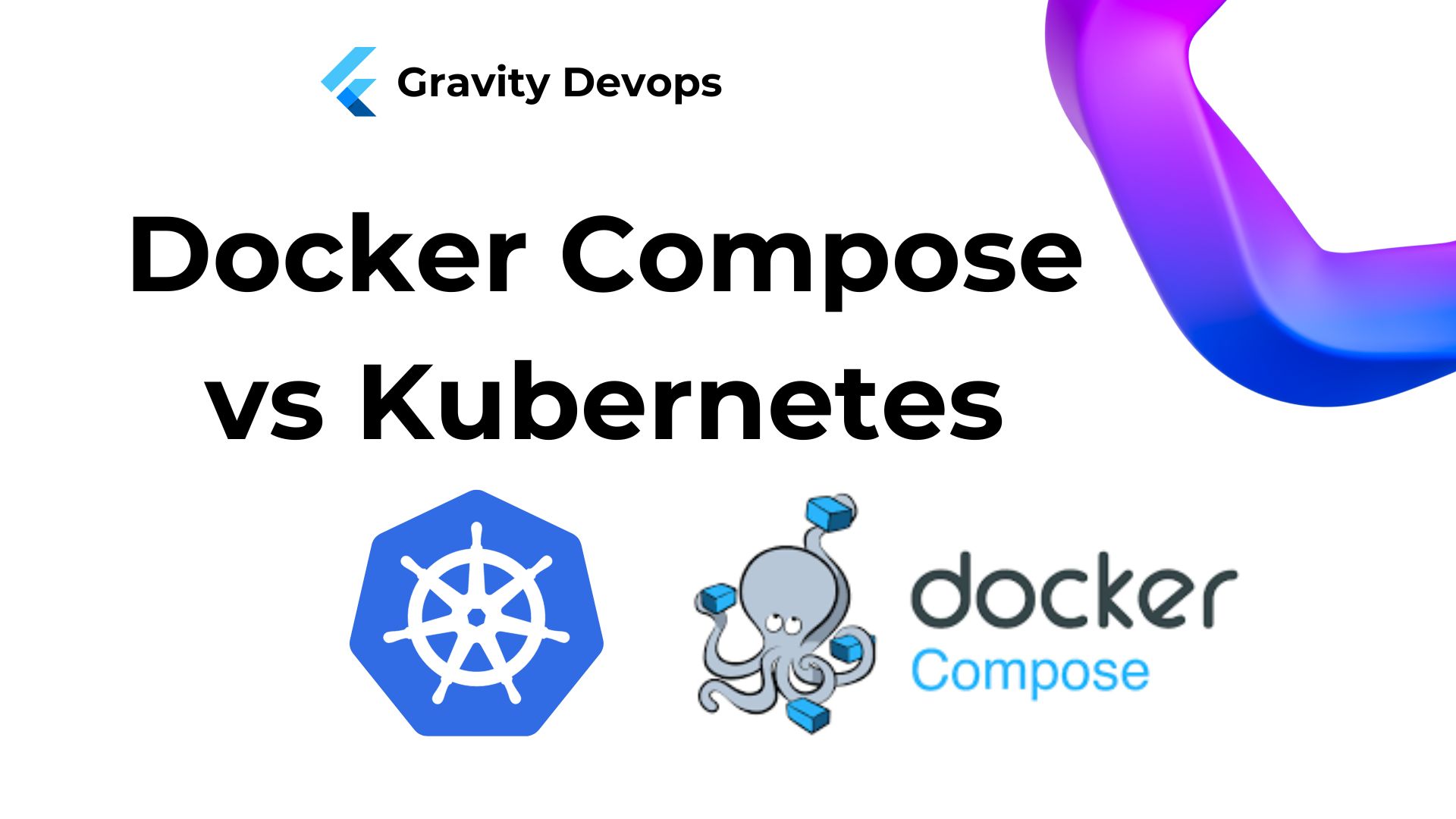Kubernetes and Docker Compose stand out as leading technologies in container orchestration. They empower users to manage multiple containers concurrently, encompassing various components like applications, databases, and caching layers, streamlining the implementation of diverse real-world scenarios.
However, it’s essential to discern between Docker Compose and Kubernetes, as they exhibit both similarities and distinctions tailored to specific needs. In this article, we’ll delve into these nuances, comparing their functionalities and pinpointing the ideal contexts for their application. Let’s dive in!
What is Kubernetes?
Kubernetes serves as a robust container orchestrator, specifically crafted for deploying and scaling containerized workloads in high-demand production settings. By distributing container replicas across numerous physical compute Nodes, Kubernetes ensures fault-tolerant deployments, guaranteeing uninterrupted accessibility to your application, even in the face of Node failures. Moreover, its capability to seamlessly integrate new Nodes enables horizontal scaling, effectively aligning service capacity with usage demands.
Kubernetes use cases
Kubernetes stands out as a top-tier orchestration solution tailored for managing container workloads in live environments. Its suitability shines, especially in microservices architectures, where applications comprise multiple containerized services requiring independent scaling yet seamless networking. With its versatile scheduling and networking capabilities, Kubernetes adeptly meets these demands, offering a robust framework for orchestrating intricate containerized setups.
Other Kubernetes use cases include:
- Streamlining multi-cloud deployments by unifying worker Nodes from diverse cloud providers into a single cluster control plane.
- Enabling on-demand and self-service deployment of staging and testing environments.
- Enhancing multi-tenant deployments accommodating various applications, teams, and customers.
- Serving as a platform for hosting AI, ML, and big data workloads necessitating extensive processing capabilities.
- Establishing a framework for developing higher-level tooling and internal developer platforms.
Kubernetes’s major drawback lies in its complexity and comparatively steep learning curve. With a plethora of features and distinct concepts, even seasoned container developers may face a considerable learning curve. Consequently, Kubernetes is often deemed less ideal for local development setups, where high availability isn’t a primary requirement, and simpler solutions might suffice.
What is Docker Compose?
Docker Compose serves as a tool for constructing and operating multi-container applications alongside Docker, widely acclaimed as the go-to containerization solution for developers. Unlike Docker’s single-container interaction, Compose empowers users to delineate their application’s services in a configuration file and subsequently launch all containers with a single command.
This tool streamlines the developer experience by facilitating the consistent and effortless deployment of your application and its dependencies. Leveraging familiar Docker functionalities, Compose offers simplified network and storage management, ensuring that your configuration is consistently applied each time you initiate containers through Compose.
Docker Compose use cases
Docker Compose finds utility whenever there’s a need to establish a consistent and versioned configuration for containers or to orchestrate multiple containers for running an application. Its user-friendly nature renders it a popular choice among developers for installation on personal machines, while it also finds application in production environments.
Typical use cases for Docker Compose encompass:
- Running multiple instances of an application on a single host.
- Simplifying the testing process for other developers by packaging an application with its dependencies.
- Facilitating local development of a container stack, which can then be seamlessly deployed to another environment.
These examples underscore Compose’s role as a developer-centric tool, streamlining essential container management tasks into concise commands, thereby enhancing productivity in containerized environments.
Kubernetes vs Docker Compose: Similarities
Now that we’ve explored the use cases, let’s juxtapose Kubernetes and Docker Compose to see how they fare side by side. While these lists aren’t exhaustive, they offer a comprehensive overview of the significant similarities and differences between the two platforms.
1) Both support multiple containers
Both Kubernetes and Docker Compose serve as multi-container tools, allowing you to initiate multiple containers concurrently and manage them collectively, streamlining interactions with your workloads. Utilizing YAML files, both systems enable the definition of containers and their respective configurations.
2) Both handle container networking
Establishing proper links between containers can pose challenges; however, Kubernetes and Docker Compose alleviate some complexities by managing basic networking tasks for you. In Kubernetes, containers are integrated into a cluster-wide flat network, enabling automatic discovery among them, while Services facilitate load balancing between containers. Compose offers a simpler networking model, where all containers within your stack seamlessly share a network connection, making it easier to grasp and learn.
3) Support simple configuration of storage volumes
Both tools are capable of running containers with persistent storage needs. In Kubernetes, Persistent Volumes handle the abstraction of various storage implementations, whether it be a local drive or a cloud block storage volume. While Docker Compose lacks cloud integrations, it still provides straightforward configuration options for local volumes, ensuring they are consistently remounted to your containers.
4) Each manages the container lifecycle for you
Kubernetes and Docker Compose streamline container lifecycle management by simplifying tasks such as initiating containers in the proper sequence, gathering their output, and terminating redundant services. Additionally, they offer auto-healing mechanisms to ensure that workloads automatically restart in the event of failure, reducing manual intervention and enhancing reliability.
Kubernetes vs. Docker Compose: Differences
The similarities highlighted above underscore the usefulness of both Kubernetes and Docker Compose for container developers and operators. However, while they certainly complement each other, their distinctions may define their roles more distinctly than their shared features.
1) Only Kubernetes is specifically designed for orchestration of distributed systems
Kubernetes is engineered to meet the demands of containerized workloads in production environments. As a specialized orchestrator, it excels in deploying and overseeing containers across extensive networks of compute Nodes, numbering in the hundreds or thousands. While Compose has the capability to handle distributed deployments, it requires Docker’s separate Swarm feature, which is not integral to the Compose platform. Swarm, in comparison, offers fewer functionalities and enjoys narrower adoption compared to Kubernetes.
2) Kubernetes supports auto-scaling
Kubernetes offers auto-scaling capabilities for deployments, adjusting container replicas or provisioning additional cluster nodes automatically in response to fluctuations in utilization. This feature streamlines management, particularly during traffic surges, without the need for manual intervention. However, Compose and Docker Swarm lack support for this dynamic scaling behavior.
3) Compose directly manages containers, whereas Kubernetes works with higher-level Pods
Compose offers a streamlined interaction layer built on the existing Docker experience, where you directly engage with Docker containers as the fundamental compute unit. In contrast, Kubernetes introduces additional concepts to the architecture, such as Pods, which can accommodate multiple containers each. While this provides added flexibility in defining workloads, it may pose a challenge for newcomers due to the increased complexity of managing these concepts.
4) Kubernetes is self-healing
Kubernetes boasts full self-healing capabilities, ensuring seamless continuity by automatically initiating replacement Pod replicas in healthy parts of the cluster in the event of container termination or Node failure, without disrupting user experience. Conversely, Compose, primarily designed for single-host setups, lacks this level of redundancy. While you can configure containers to auto-restart post-failure, it doesn’t address scenarios like Docker runtime failures or physical host outages.
5) Kubernetes supports scheduled jobs
Kubernetes transcends its role as a mere container orchestrator; it serves as a comprehensive platform for developing and deploying applications. Its support for both one-off and scheduled jobs streamlines the implementation of intricate container-related functionalities, eliminating the need for manual system crontab configurations or introducing unnecessary processes into your containers.
6) Compose is primarily a local tool
The primary disparity between Compose and Kubernetes lies in their respective approaches. Compose prioritizes local environments, while Kubernetes emphasizes multi-host deployments with extensive scalability potential. While Swarm mode enables Compose to operate across multiple hosts, it doesn’t offer the comprehensive cloud integrations and managed provisioning options synonymous with the Kubernetes ecosystem.
Kubernetes vs. Docker Compose: Comparison table
“Need a quick reference to compare Kubernetes and Docker Compose, or still uncertain about their similarities and differences? Here’s a handy comparison table.”

Can you replace Docker Compose with Kubernetes?
Kubernetes and Docker Compose cater to slightly different yet overlapping needs. You might opt for Kubernetes to handle tasks like running apps in production, while relying on Docker Compose for local development, among other scenarios.
Leveraging both Kubernetes and Docker Compose in tandem often proves pragmatic for DevOps teams, allowing them to address diverse objectives effectively. Compose simplifies common developer tasks, prioritizing scenarios where distributed deployments and high availability are less critical, while Kubernetes furnishes additional capabilities crucial for ops teams managing stable live environments.
It’s important to note that Kubernetes and Docker Compose operate independently and cannot directly interact. Each has its own configuration files and command-line interfaces (CLIs), preventing direct integration of Docker Compose within Kubernetes deployments, or vice versa. Although tools like Kompose facilitate the conversion from Docker Compose to Kubernetes, transitioning in the opposite direction is more challenging due to Kubernetes’ numerous additional features that lack counterparts in Compose.
Key points
When dealing with containers, relying solely on the Docker CLI can become limiting. Docker Compose enables the creation of container stacks for collective interaction, while Kubernetes offers seamless scaling of container replicas across multiple physical hosts. These capabilities are crucial for constructing and managing most real-world containerized systems.
As demonstrated in this article, while the tools share similarities, they also possess distinct differences. Kubernetes typically excels in operating containers in production settings with substantial scalability and reliability requirements. Conversely, Docker Compose’s simplicity and user-friendliness often make it the preferred choice for local development, given its lower initial learning curve.
Fortunately, there’s no need to make an exclusive choice between the two tools. Many DevOps teams effectively utilize both Docker Compose and Kubernetes, harnessing the advantages offered by each tool.



